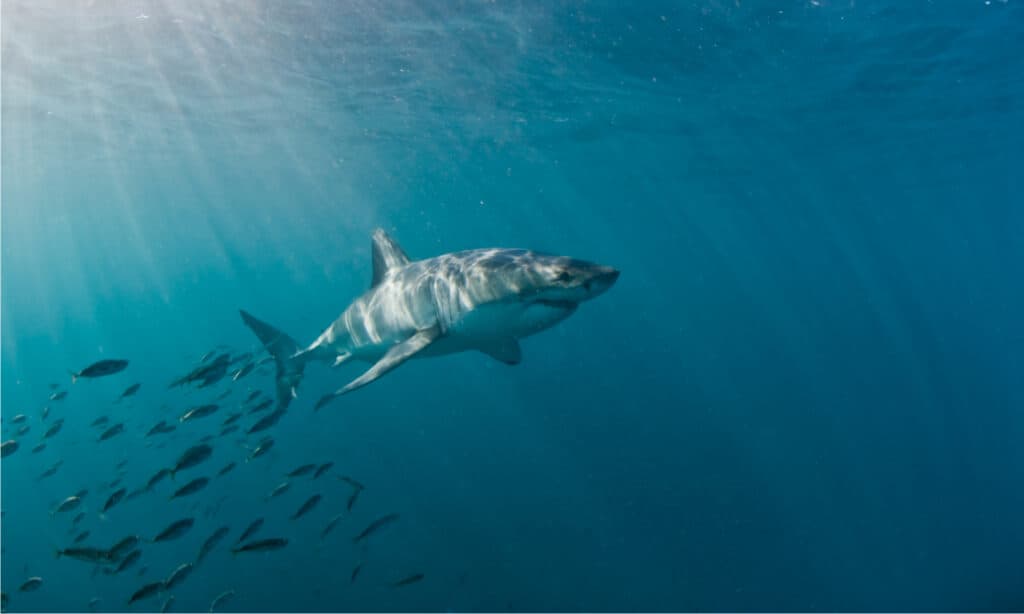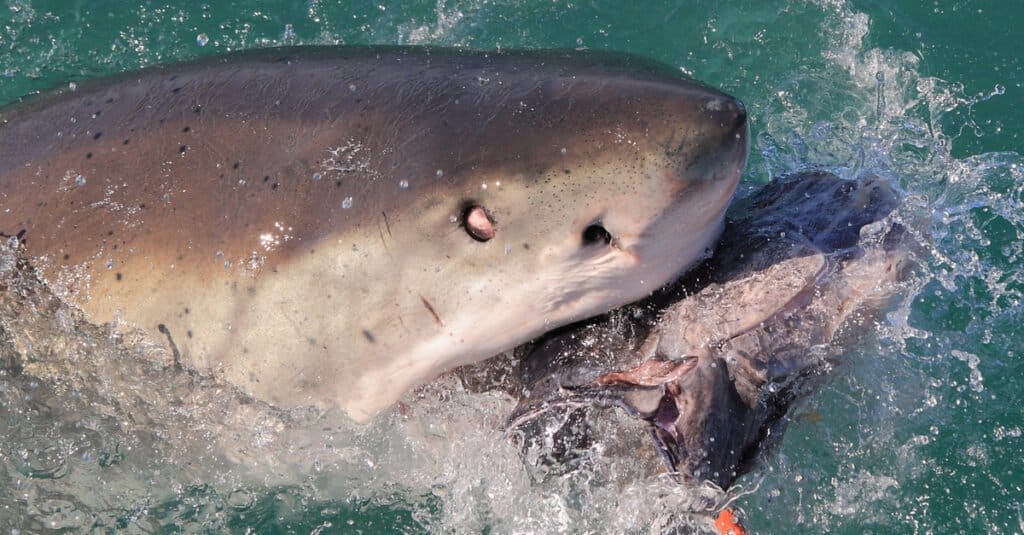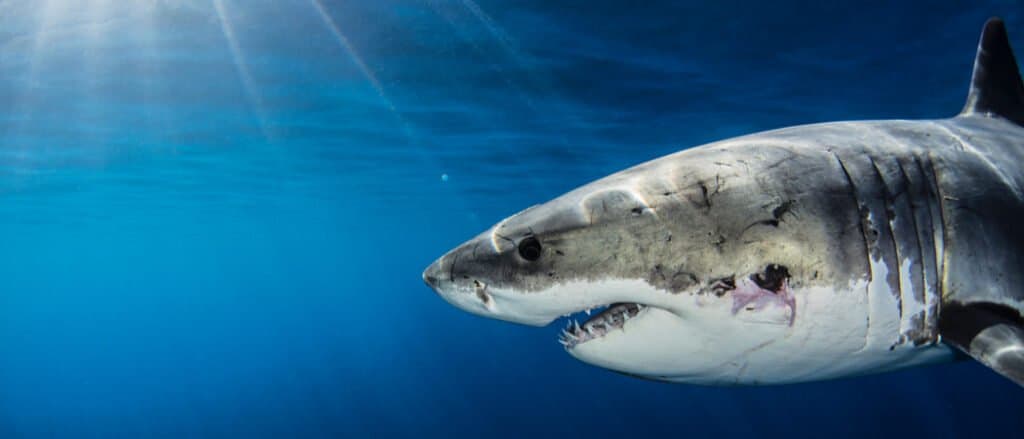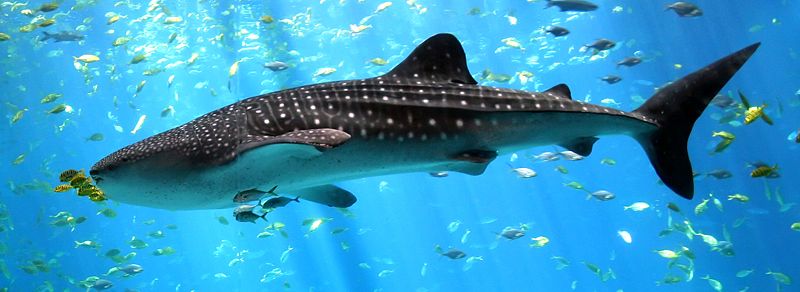You may have seen shark exhibits at zoos or aquariums before, but most of the sharks on display are smaller sand tiger sharks or nurse sharks. Majestic 20 foot-long great whites sharks would certainly be a draw, but there has only been one aquarium in the world that has ever kept a great white for more than a week or two. Even then it had to be released when they were not able to keep it in captivity any longer. Why would that be? Why do other sharks survive in zoos but not great whites? Let’s find out about why great white sharks have never survived in zoos.
Why have Great White Sharks Never Survived in Zoos?
Watch this video first:
The main reasons Great White Sharks never survive in zoos are an inability to replicate their habitat and behavioural changes during captivity.
Great whites generally grow to 15 feet and also cover extensive distances daily. Their natural habitat they need to thrive is not so easily replicated.
During captivity, great whites may turn on their neigbors, i.e., other fish in their vicinity.
They may also ram themselves against the walls of their cages causing injury to themselves or refuse to eat.
How much room do Great White sharks need?

Great white sharks are very migratory and can dive deep into the ocean.
©Fiona Ayerst/Shutterstock.com
Great white sharks can travel 50 miles in one day. They are very migratory and live out in the open ocean. During the spring they will migrate from the coast of North America all the way out to a spot called the “White Shark Café”, an area that is about half-way between Baja California and Hawaii. Some go all the way to Hawaii to summer. So while they wouldn’t necessarily need miles of an enclosure, their natural habitat is quite expansive and difficult to replicate.
History of attempts to keep Great White sharks in zoos or aquariums
- 1984: The Monterey Bay Aquarium, near San Francisco, CA, first attempt to have great whites was well thought out and planned for but it was not successful. The great white they had on display lasted for 11 days before it died. The problem? The shark refused to eat.
- Mid 80’s: Monterey Bay Aquarium did not give up and tried to keep 6 or so great whites alive several different attempts, but they were again, not successful.
- 2004-2005: Monterey Bay Aquarium continued to evaluate its program and was finally able to keep a half-dozen great whites on display with one making it a record 198 days. They then had to release that one into the wild due to its aggressive nature towards other sharks in the tank.
- 2011: Monterey Bay Aquarium wanted to try again and were able to keep a great white for 2 months but then had to release it back in the wild. Unfortunately, it died soon after being released.
- 2016: Aquarium in Japan had “The Sea of Dangerous Sharks” exhibit where they had a 11.5 foot male great white shark on display. The shark was on display starting January 5, 2016. However, once again, just three days later, on January 8th the shark died. The Associated Press reported that the shark refused to eat.
- Other zoos and aquariums have attempted the keep great whites in captivity but have also failed. They soon realized the cost was not worth the effort.

Great White sharks are active hunters, but in captivity they refuse to eat.
©Alessandro De Maddalena/Shutterstock.com
How did the one shark in the Monterey Bay Aquarium survive for 198 days?
First off, it was a small shark, only 4 feet long. Adult male sharks average 15 feet long. The aquarium had a tank that contained 1 million gallons of water… 1 million gallons! Since White sharks are accustomed to diving for food, they made the tank 35 feet deep. Another thing that worked was they kept the shark in a 4 million gallon open ocean pen before moving it to the aquarium. This gave them time to monitor the shark and make sure it was ready for the move. Because the shark was a juvenile and not yet used to a diet of seals, sea lions and dolphins it was used to smaller prey like fish that it would eat.
Why did the Monterey Bay Aquarium end their Great White shark program?
The researchers concluded that they had answered the important research questions they were looking for and believe they can continue their research with the tagged sharks in the wild.
Why don’t other aquariums or zoos continue to try to keep Great Whites?

Great white sharks have never survived in zoos before and it is extremely costly to try to maintain the conditions for a great white.
©Ken Kiefer/Shutterstock.com
The cost for one thing is very prohibitive. Think about the amount of resources required to maintain the conditions of a great white sharks environment. There is also the difficult task of catching and transporting a great white. Many times the sharks would get injured during the struggle to captured and die days later from injuries. Think about trying to get a shark from the ocean to the aquarium in a truck or transport that had to have moving water to keep the shark alive. No easy task. There is also the ethical question of containing an animal that thrives in the wide open ocean. Especially one that does not need human intervention due to injury or sickness or being unable to survive in the wild on its own.
How do whale sharks survive in zoos and aquariums?

This male whale shark lives at the Georgia Aquarium in a 6.3 million gallon tank!
Whale sharks are the largest fish in the ocean. They are not whales but fish and can get to be 40 feet long! The average ones are 8-32 feet long and they are also highly migratory. However, whale sharks feed on plankton, krill and tiny fish that they sieve through their gills. They are very slow swimmers as they gracefully glide through the water with their 4-foot-wide mouths open, sifting the food from the water. Whale sharks do require an enormous tank; the one in Georgia Aquarium is the largest seawater tank in the world and holds 6.3 million gallons of water! It is the home of 4 whale sharks. Check here to find out what other aquariums in the world are large enough to hold whale sharks.
The photo featured at the top of this post is © wildestanimal/Shutterstock.com
Thank you for reading! Have some feedback for us? Contact the AZ Animals editorial team.






